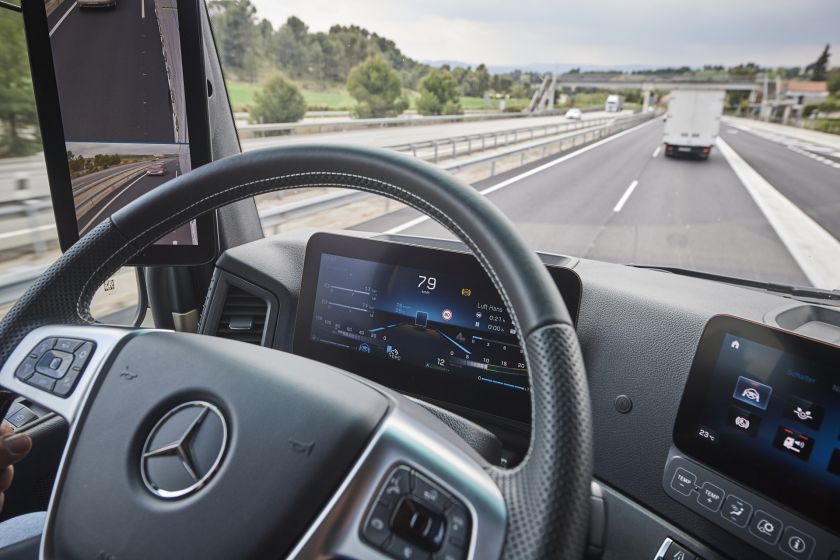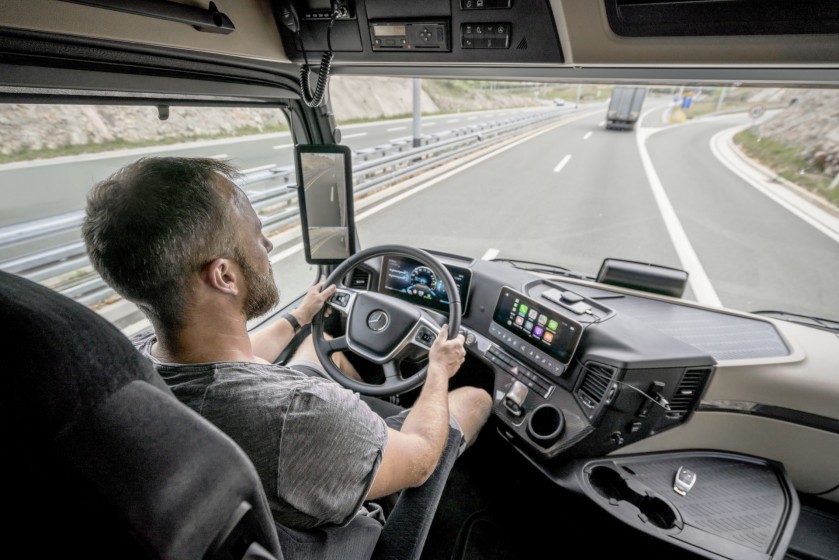
Changes are expected in the Latvian freight transport market in the coming years. The European Parliament is continuing to push the controversial Mobility Package, a new framework for major changes in international freight transport. There is no reason to hope on the Russian market: even if international sanctions were lifted, the market would in fact have to be re-mastered.
 So, all we can do is fight for our place in the European freight market, and one option is vehicles with autonomous driving function. Another question – are we ready for it?
So, all we can do is fight for our place in the European freight market, and one option is vehicles with autonomous driving function. Another question – are we ready for it?
Science fiction – a reality already in five years
The European Mobility Package requires drivers to return home every four weeks. The idea is humane, but from a business point of view, it actually means that the old European countries - Italy, France, Germany and their neighbours – will push out Eastern Europe from the market, as regular trips back to Poland, Latvia or Lithuania will significantly increase the costs and weaken the competitiveness. Larger carriers with larger fleets could solve the situation by registering a company abroad, but that means that the taxes paid to Latvia would go down.
If the situation remains unchanged, the only real solution for Latvian companies in the future is acquiring semi-automatic and later fully automatic trucks, which will significantly reduce the driver's working time. But there is still a long way to go – not because of the vehicles themselves.
A vehicle that can carry out certain road sections independently, without the involvement of the driver, with the appropriate infrastructure, markings and road signs, evaluating driving speed, locating settlements and possible obstacles and communicating with other vehicles – sounds like science fiction. But Mercedes-Benz plans to launch such trucks on the market as early as 2025. As far as Europe is ready for it.
Easier for both drivers and freight forwarders
In an ideal world, in five years, the driver and assistance systems would be in a changed role. Assistance systems would become the basic systems, the driver would be in the cockpit, but would take control only in the city or at the end of the autonomous driving zone, for example, when driving off sections specially prepared for the vehicle.
Semi-automatic control technologies are already in use and available in Latvia: the latest Mercedes-Benz Actros has Active Driving Assistance System, which enables a standard semi-automatic truck driving for the first time. The system is capable of automatically braking, accelerating and steering. So, in theory Mercedes trucks are already able to drive autonomously with the right infrastructure – logical road signs, quality road surfaces and markings, from which the machine itself reads curves, borders of municipalities and speed limits. However, the driver is responsible for driving. In addition, electronic steering equipment may not be used by road users now and there must be a mechanical transmission between the wheels and the steering wheel. Germany is the first country in the European Union to make appropriate legislative changes to allow vehicles with electronic steering system to participate in traffic. Currently this is only possible in the US where our models are also being tested.
 Of course, driving in this ideal world would be much easier. Imagine: you drive from Riga on the Vidzeme main road, press the button that activates the autonomous driving, and sleep carelessly in the cab till Gulbene! Freight carriers would also benefit from this, as compulsory stops and rest periods for drivers should no longer be included in the timetable. In addition, the driving profession is becoming increasingly unpopular and losing prestige throughout Europe, and freight transport operators must step up in their efforts to attract employees. Over the next fifty years, the driver's profession is expected to disappear altogether as processes become fully automated.
Of course, driving in this ideal world would be much easier. Imagine: you drive from Riga on the Vidzeme main road, press the button that activates the autonomous driving, and sleep carelessly in the cab till Gulbene! Freight carriers would also benefit from this, as compulsory stops and rest periods for drivers should no longer be included in the timetable. In addition, the driving profession is becoming increasingly unpopular and losing prestige throughout Europe, and freight transport operators must step up in their efforts to attract employees. Over the next fifty years, the driver's profession is expected to disappear altogether as processes become fully automated.
There are more challenges than the solutions
But for the time being, it is only at the level of a beautiful idea, at least in Latvia, because neither our road infrastructure nor legislation is suitable for autonomous driving. So far there are more questions than answers, and even semi-automatic trucks on Latvian roads in 2025 seem like a fantastic opportunity now. In European countries with well-organized highway infrastructure, it looks more realistic, although there are quite a few unanswered questions.
The more components a device has, the more likely it is that something breaks. As the vehicles become more complicated, the likelihood of technical problems will increase. What happens to a vehicle that suddenly stops on a motorway? How to protect the vehicle from cyber security threats? What will deter hackers at the request of business rivals or because of pure sports to make the vehicle to enter the opposite lane? How will super-smart technologies cope with the weather? For example, currently the radars built into the bumpers do not detect snow, they only report that the radar is dirty. What will happen to the vehicle in the snowfall? When will the braking systems learn to recognize a slippery surface and calculate the braking distance correctly?
Of course, all these issues are being addressed, but we are not seeing the solutions yet. It must be understood that autonomy is keeping up with technological advances, but the technology is evolving at a faster rate than people are keeping pace with it. In Latvia, in five years, we are unlikely to reach the level of road quality affording autonomous driving, and drivers will probably have to steer themselves. What Latvia could provide would be the 5G network needed for vehicle-to-vehicle communication, but that alone would not be enough. If we want to remain competitive in the international freight transport market, we must be very much interested in the introduction of semi-automatic vehicles and work much more actively for this purpose than the old Europe. Maybe excellent engineers and innovative solutions is the key to our true competitiveness?

Aivis Zapereckis
Truck Sales and Marketing Manager



